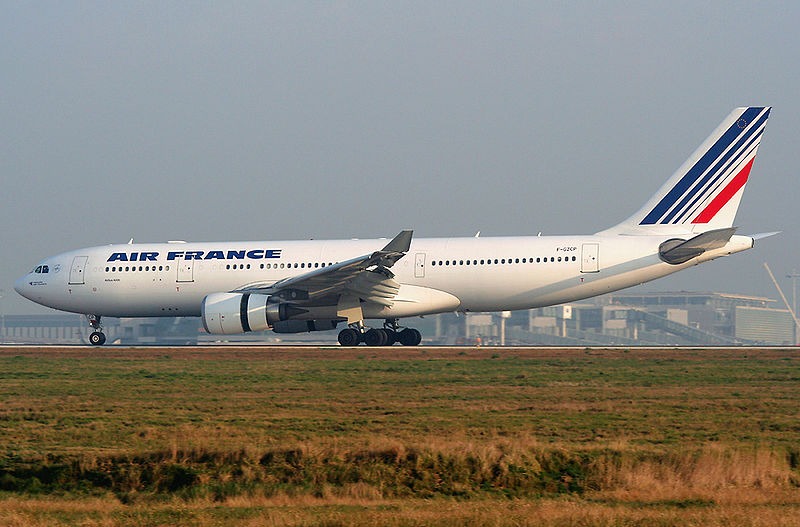
In the early hours of June 1, 2009, Air France Flight 447, an Airbus A330-203 en route from Rio de Janeiro, Brazil, to Paris, France, disappeared from radar screens while flying over the Atlantic Ocean. As the hours turned into days, the world watched in anticipation and fear, hoping for any sign of the aircraft and its 228 passengers and crew. The event marked the beginning of a grim and painstaking search that would span nearly two years.
International teams of investigators, aviation experts, and deep-sea explorers were deployed to locate the wreckage and understand the circumstances leading to the aircraft’s mysterious disappearance. The search proved arduous due to the vast expanse of the ocean and extreme depths, but persistence eventually paid off when key components of the wreckage and flight recorders were retrieved from the ocean floor. The analysis of the recovered data revealed a complex interplay of technical malfunctions and human errors, shedding light on one of the most baffling and tragic events in modern aviation history.
The Flight
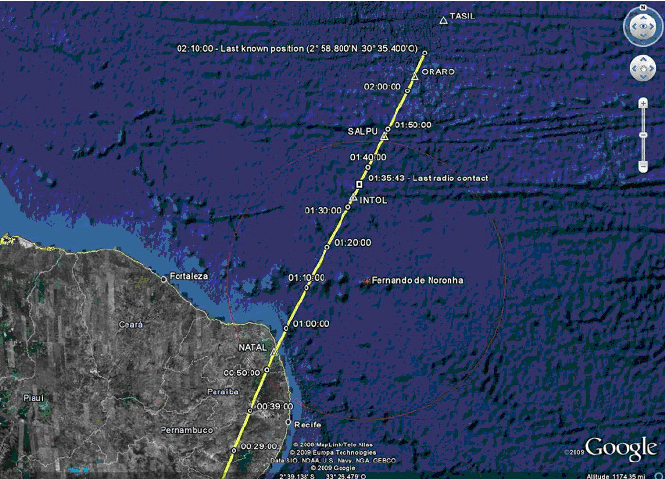
Air France 447 was a routine overnight flight carrying 216 passengers and 12 crew members, including three experienced pilots. The aircraft, an Airbus A330-203, took off from Rio de Janeiro’s Galeão International Airport on the evening of May 31, 2009, and was expected to land at Paris-Charles de Gaulle Airport the following afternoon. As the aircraft ascended to its cruising altitude of 35,000 feet, it encountered a line of thunderstorms over the Atlantic Ocean—a common weather phenomenon in the Intertropical Convergence Zone along its intended route. Despite the routine nature of navigating such weather, this flight would soon face a series of events that would shock the aviation world.
As the aircraft penetrated the storm system, it experienced turbulence and a series of rapid weather changes, including heavy rain and violent updrafts. The pilots engaged the autopilot and auto-thrust systems to manage the flight through the adverse conditions. However, shortly after entering the storm, the aircraft’s pitot tubes—external sensors critical for measuring airspeed—became obstructed by ice crystals, causing the autopilot to disengage and triggering a series of alarms in the cockpit.
The sudden loss of reliable airspeed data led to confusion among the flight crew. As the pilots struggled to understand the situation and regain control, the aircraft began to experience unexpected aerodynamic behaviors. Attempts to manually fly the aircraft through the stall conditions only exacerbated the situation. Over the next few minutes, the crew’s efforts to recover were unsuccessful, and Flight 447 entered an aerodynamic stall from which it could not escape.
Disappearance and Search Efforts
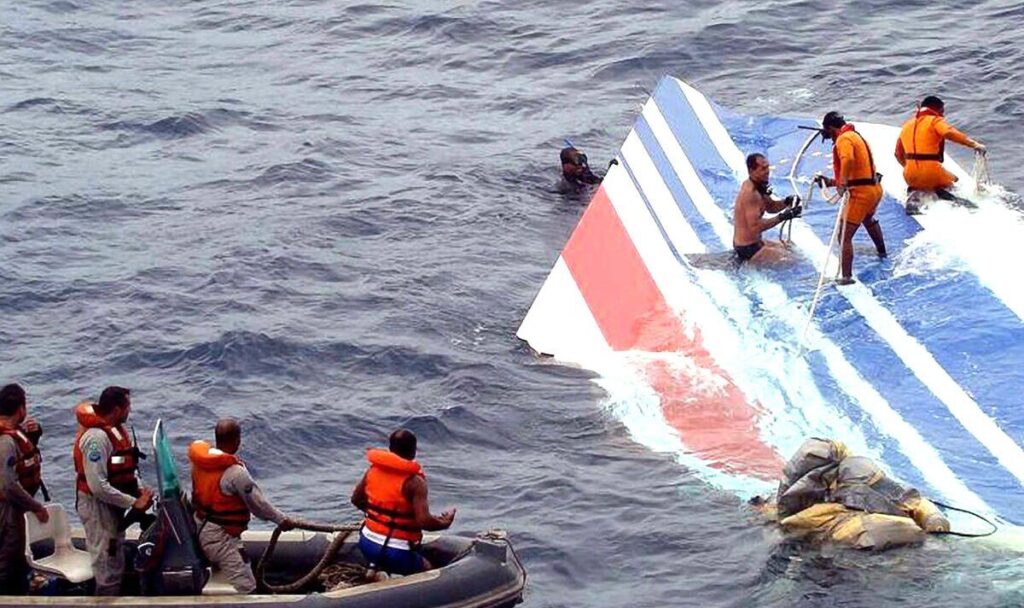
In the early hours of June 1, 2009, Air France 447 vanished from radar screens without issuing any distress signal, leaving air traffic controllers and the airline in a state of confusion and uncertainty. The catastrophe struck in a notoriously treacherous region of the Atlantic Ocean, known for its unpredictable weather and vast, inhospitable expanse. Following the disappearance, initial search and rescue efforts were urgently dispatched to the last known position of the aircraft. However, the remoteness and enormity of the ocean area, combined with challenging weather conditions, significantly hampered the search operations.
Over the next few days, multinational efforts to locate the aircraft intensified, involving naval ships, aircraft, and remote sensing technologies. Debris and bodies were gradually discovered floating on the ocean surface, confirming the worst fears that Flight 447 had indeed met with disaster. Yet, the majority of the wreckage remained elusive, lying somewhere on the seabed, nearly 13,000 feet below the surface—an area characterized by rugged underwater terrain and extreme depths that posed significant technical challenges.
Despite these obstacles, determination did not waver. An international consortium of experts, including deep-sea recovery specialists and advanced robotic technology operators, embarked on a mission to find the wreckage. The search operation transitioned into an arduous process involving sophisticated sonar equipment and remotely operated underwater vehicles (ROVs). These technologies scoured the seafloor, navigating through underwater mountains and valleys in search of the crucial flight recorders, often referred to as the “black boxes,” which were essential for unraveling the mystery of the crash.
It was not until nearly two years later, in April 2011, that the main wreckage of Air France 447 was finally located. The breakthrough came after extensive mapping of the ocean floor and multiple search phases, highlighting the complexities and enormity of deep-sea recovery operations. The discovery, occurring after considerable time and effort, signified a pivotal moment in the investigation, allowing recovery teams to retrieve critical pieces of the aircraft, including the flight data recorder and cockpit voice recorder.
Recovery and Investigation
The recovery of Flight 447’s black boxes—the cockpit voice recorder and the flight data recorder—was a critical milestone in unraveling the mystery of its demise. Analysis of the data revealed a sequence of events that painted a harrowing picture of what transpired in the cockpit during the flight’s final moments.
As Flight 447 entered the region of thunderstorms, it encountered a phenomenon known as ice crystal icing. This caused a temporary malfunction of the aircraft’s airspeed sensors, known as pitot tubes. Without accurate airspeed data, the autopilot disengaged, and control of the aircraft was transferred to the flight crew.
In the absence of reliable airspeed information, the flight crew struggled to maintain control of the aircraft. Their responses to the situation were influenced by a combination of factors, including fatigue, training, and cognitive overload. As the aircraft stalled, the crew’s actions inadvertently exacerbated the situation, leading to a catastrophic loss of control.

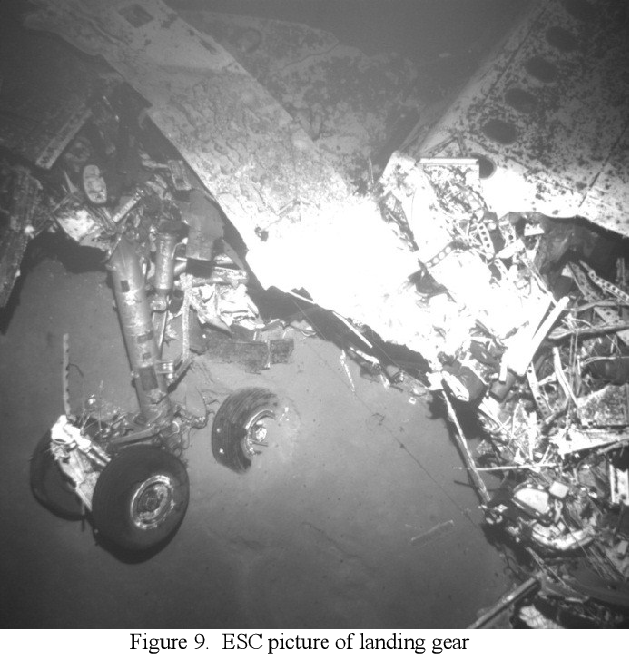
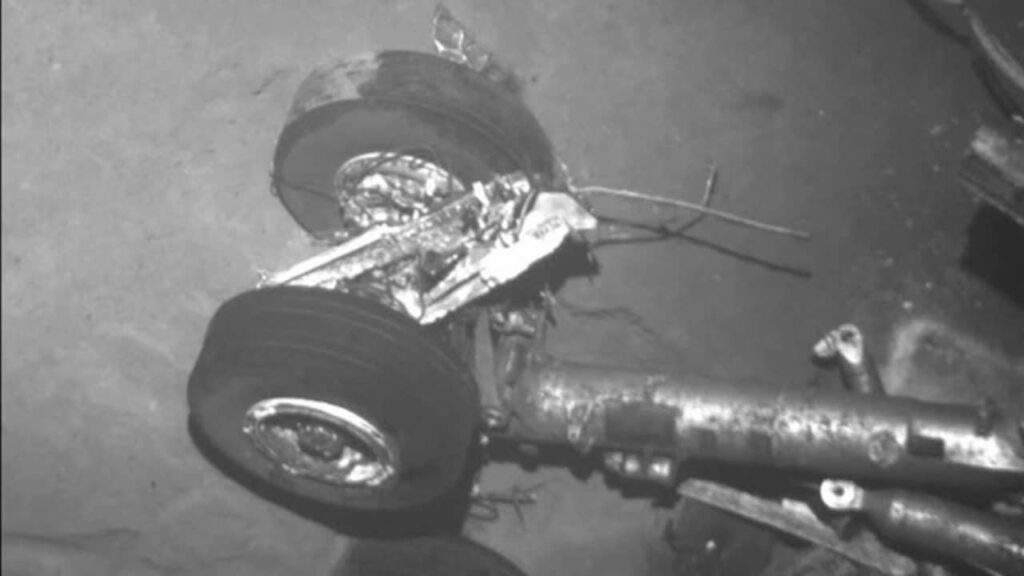
Wreckage discovered 13,000 feet below the oceans surface
Lessons Learned
The tragedy of Air France 447 prompted a reassessment of aviation safety protocols and highlighted the importance of crew training, situational awareness, and technological safeguards. Among the key lessons learned:
- Crew Training: Emphasis on manual flight skills and scenario-based training to prepare pilots for unexpected situations.
- Automation Dependency: Awareness of the limitations of automation and the importance of maintaining manual flying proficiency.
- Situational Awareness: Encouraging effective communication and collaboration among flight crew members, especially during high-stress situations.
- Technology Enhancement: Implementation of enhanced airspeed sensor designs and improved cockpit alert systems to mitigate the risk of sensor malfunction.
Legacy and Remembrance
The legacy of Air France 447 extends beyond the realm of aviation safety. It serves as a reminder of the fragility of human life and the enduring quest for understanding in the face of tragedy. Memorials and commemorations stand as tributes to the lives lost and the lessons learned from this pivotal moment in aviation history.
The story of Air France 447 is a testament to the complexities and challenges of modern air travel. It is a reminder that safety is not guaranteed, but rather an ongoing pursuit that requires vigilance, collaboration, and a willingness to learn from past mistakes. As the aviation industry continues to evolve, the lessons of Flight 447 serve as guideposts on the journey toward safer skies and a more secure future for all who take to the air.
POPULAR TODAY
Uncharacteristically, Brown did not take her own car and has not been heard from since.
